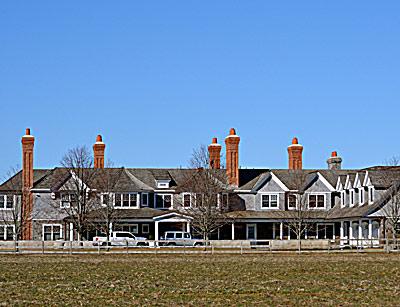To Study Consolidation
To Study Consolidation
The Springs, East Hampton, Montauk, Sag Harbor, Southampton, and Tuckahoe School Districts and the Eastern Suffolk Board of Cooperative Educational Services will seek a $175,000 grant from the State Department of Education for an efficiency study that will look at ways the six districts could work together to collectively save money, from sharing services to possible consolidation.
The Springs School Board voted Monday night to pursue the grant money along with BOCES and the other districts. Together, the six districts serve 5,892 students.
The grant money from the state would amount to $175,000; each participating district and BOCES would offer up an additional $2,777 to bring the total money available for the study to $194,444.
“It’s a competitive grant,” Michael Hartner, the Springs School superintendent, said on Monday, and it is available not only to schools. “The school districts are clumped in with other municipalities, so there’s no guarantee.” In a press release issued earlier that day, Mr. Hartner had said, “We have nothing to lose, and a great deal to gain — the possibility of improved educational opportunities for children and reduced costs to taxpayers.”
The idea to apply for the grant came about soon after Springs and East Hampton signed their tuition agreement in June, an agreement which also contained a rider for the districts to explore a consolidation study.
“It should be noted that the study would be strictly advisory,” read the release from Springs School. “Sharing of services cannot occur without the authorization of the boards involved, and district consolidation cannot occur without both board authorization and a public referendum.”
Kathee Burke Gonzalez, the Springs School Board president, acknowledged feeling hopeful since learning of the government efficiency grant. “I was genuinely excited,” she said. “It’s a significant amount of money.”
The districts that receive the awards should be notified by June, and if the local schools are awarded the grant the next step would be to issue a request for proposals from professional firms and appoint a steering committee to oversee the study.
The application for the grant is due in Albany by Wednesday.
“We are the only group of schools on Long Island doing this,” Ms. Gonzalez said. “I have a feeling all eyes will be upon us.”
In other news, Springs, like other public schools in the state, is still waiting on the data from Gov. Andrew Cuomo’s office in order to comply with the state’s new 2-percent cap on property tax levy increases in its 2012-13 budget. The information was originally expected sometime in November, but it has been pushed out repeatedly, and may now interfere with the deadline of April 16 for a completed budget.
“If that is the case,” Ms. Gonzalez said, “we may need to push the date to April 18 or 23 to give us more time.”
Eric Casale, the school’s principal, offered a presentation on the mandated Common Core Learning Standards that 48 out of 50 states, including New York, have adopted. Mr. Casale focused on reading expectations in the early years, which will now be set at a notably higher competency level.
Testing for fourth-grade English language arts, which used to take the students 35 to 45 minutes to complete, now involves three days of 90-minute testing, a huge jump that Mr. Casale called “interesting and scary.”
During public commentary, Michelle Grant, a Springs parent, spoke up about some of the budget cuts the school board is considering. “The cuts you are looking at are counterintuitive to what the [Common Core Learning Standards] are trying to accomplish,” she said. “You’re talking about doing away with prekindergarten, about kindergarten going to half a day, 30 to a class, reducing the number of teaching assistants.”
“I mean, you have to look at what you have to look at,” she continued, “but I wish the community could see this, could hear that these students are expected to meet these standards early and consistently. Cutting programs is not going to accomplish what the state is mandating the school to do,” she said.
Mary Jane Arceri, a Springs teacher for 30 years, said her goodbyes at the school board meeting as she heads into retirement. “Springs School will be losing a tremendous teacher and an advocate for special education students,” Ms. Gonzalez said with emotion. “Congratulations, M.J., and thank you.”







